The Sala dei Notari (Room of the Notaries) in Perugia is not just an imposing and beautiful space, but something that tells us how Perugians thought of themselves, in the Middle Ages and today.
To visit, or live in, a central Italian town is to be constantly aware of the Middle Ages. Not just the architecture, but the medieval town districts, and the celebrations and parades that I documented in my posts on The Serious Business of Dressing Up and its successor. Over time I have come to think that there is more to this than the admittedly great fun of a street parade in funny costumes. To some extent I believe that it is because towns are celebrating what is seen as a golden age. Why? It is unlikely to be the regular wars and the bubonic plague. But it is likely to be about community memories of identity and self-determination. Let us explore that idea in the context of Perugia.
An enjoyable aspect of central Italian cities – to the history nerd anyway – is the fact that many of the noble civic buildings are still used for public administration. These buildings generally date from the period of the independent communes in the 11th-13th Centuries, when cities developed their own institutions of self-government – law courts, regulation of commerce and public works, and self-defence.
One of the best examples is in Perugia. In my post on The Buried Streets of Perugia I wrote about how the subjugation of Perugia by Pope Paul III led to the relocation of power to the new Papal fortress built at the southern end of the town, and how, during the centuries of neglect that followed, the magnificent Gothic civic buildings at the other end of town nonetheless survived. But before Perugia fell, there were few better examples of the assertive, self-governing and self-confident medieval Italian city.
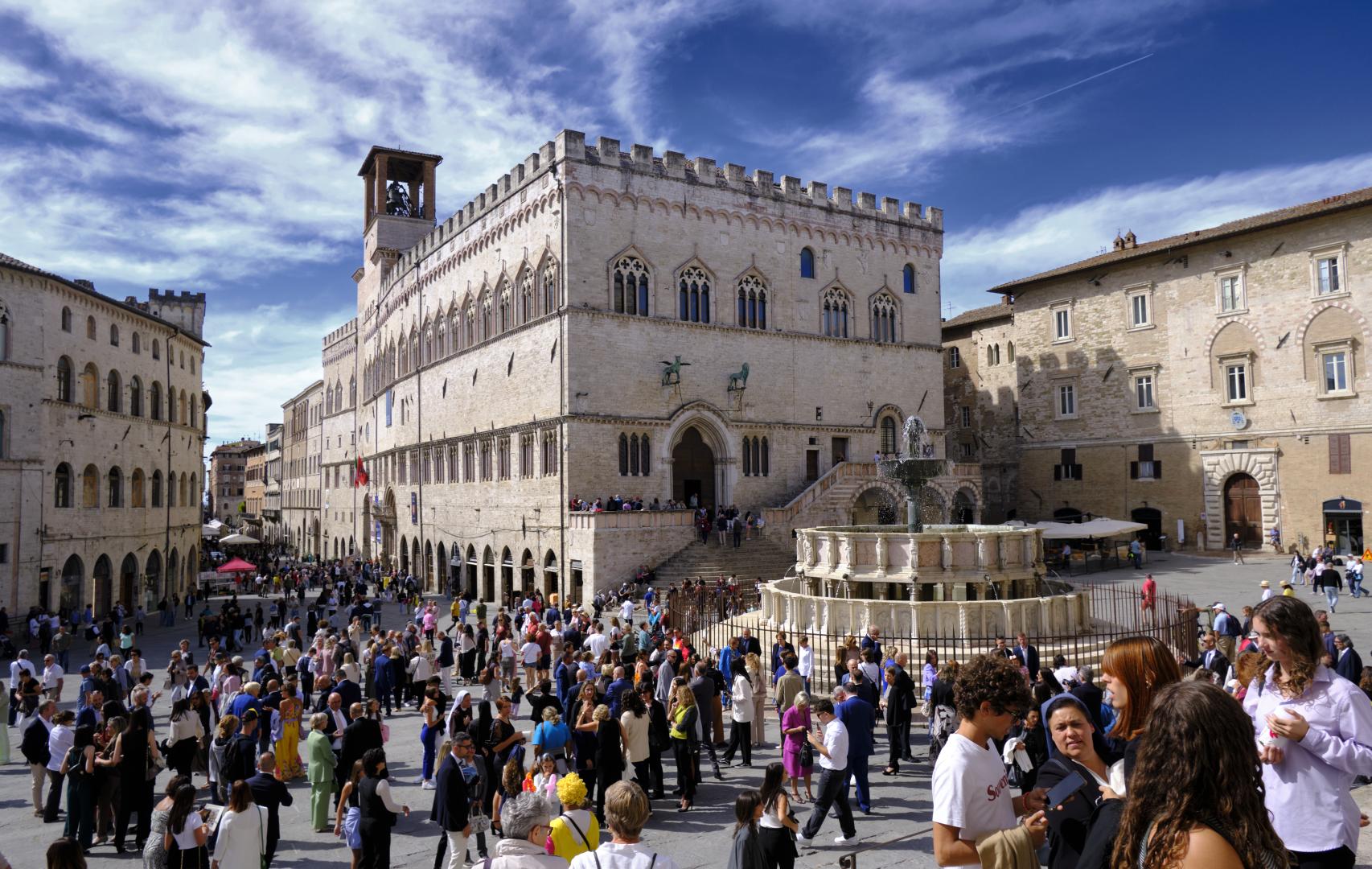
After the defeat of Papal forces by the new Italian government in 1860, the fortress was demolished and replaced by the palaces which – with obvious symbolism – housed the government of the Region of Umbria and the Province of Perugia as elements of the modern Italian State. Meanwhile, at the northern end of town, by the Duomo, the Palazzo dei Priori continued to house the local government offices, as it does today, along with the excellent National Gallery of Umbria.
While there is much to admire about the period of the independent communes, one very unfortunate aspect – which was to fatally weaken Italy in following centuries – was the intense factionalism of the time. City fought city, and internally, factions and powerful families fought each other. These factions were often proxies for the overarching great-power rivalry of the Middle Ages, between the Papacy (the Guelphs) and the Holy Roman Empire (the Ghibellines), but the existence of that rivalry did not cause Italian bellicosity, it simply channelled it.
The Perugians were famously warlike, and there can have been few cities in central Italy they did not fight with. They were particularly unable to get along with their near neighbours in Assisi, and in 1202 there was an encounter between Perugia and Assisi at a place called Collestrada, near today’s Perugia Airport. In that battle a wealthy young man serving as a soldier in the militia of Assisi was taken prisoner and spent a year in Perugian captivity, where he underwent a spiritual conversion. His name was Giovanni di Pietro di Bernardone, but history knows him by his nickname Francesco – or in English, Francis of Assisi.
Francis’s peaceful message didn’t change things very much. In the photograph below, the iron chains and bar that hang above the door of the Palazzo dei Priori were taken from the gates of the town of Torrita di Siena after a battle between Perugian and Sienese forces in 1358. The gryphons, by the way, are the symbol of Perugia, and you can see them everywhere in the city, and also on packets of “Baci” chocolates made by the Perugina chocolate company.
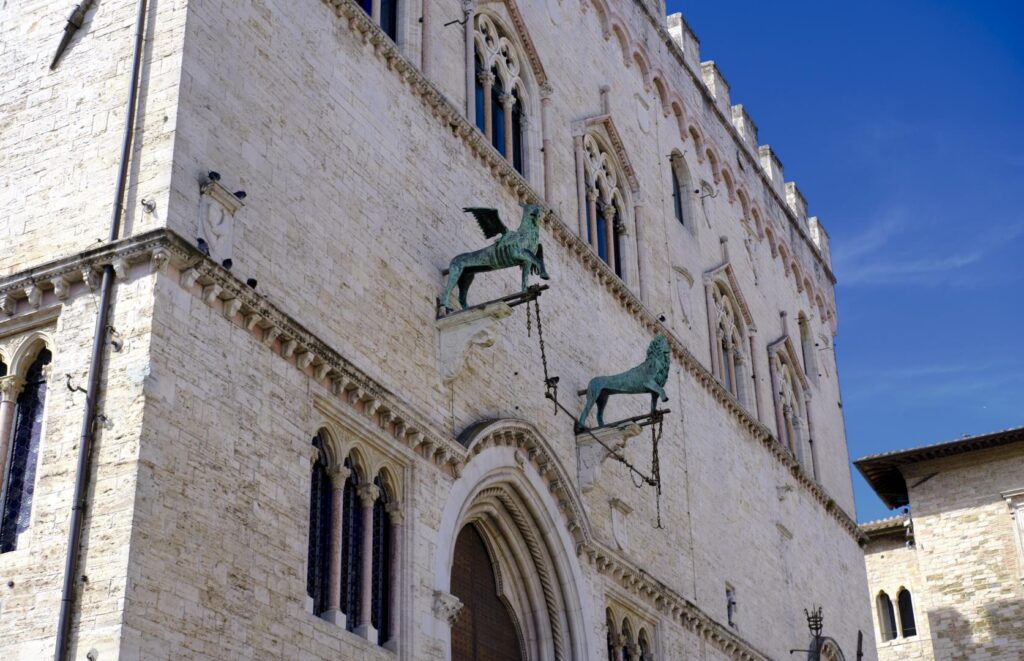
In the end, the factionalism and fighting doomed the independent communes. Fighting created mercenary armies, their commanders became warlords and strongmen who seized power, and some of those went on to become counts, marquises and dukes. They in turn fell to foreign powers, or in central Italy, to the Papacy.
But those collapses of self-government did not happen straight away. That they did not happen sooner was due in part to an admirable institution devised to deliver effective government while keeping factionalism under control. This was rule by a podestà. A podestà was an official – well-born, but not of the higher ranks of the nobility, typically of the rank of knight – and typically with legal experience. Crucially, a podestà had to come from somewhere else, so could not have ties to one of the local factions. And he served for a fixed term (usually two years) so he was not around long enough to “go native” with one of those local factions. A podestà was not a dictator, more like a chief magistrate. His authority was balanced by councils and assemblies, other magistrates and the factions themselves, but he was expected to act as a mediator between them all, and take decisions in the best interest of the city as a whole.
In some places the podestà was felt to be too closely aligned to the interests of the gentry rather than the growing middle class, (populares in Latin) so an additional official position was created, that of capitano del popolo, who like the podestà was appointed from somewhere else and served a fixed term. Perugia too took that route.
In Perugia today, at the top of a flight of stairs leading up to the Palazzo dei Priori from what is now called Piazza IV Novembre near the famous Fontana Maggiore, is a large room called the Sala dei Notari, or “room of the notaries”. It is a large chamber, originally used for meetings of the popular assembly. Later, after Perugia came under Papal control and popular assemblies ceased to be meaningful, it became the headquarters of the guild of notaries, from which it takes its modern name.
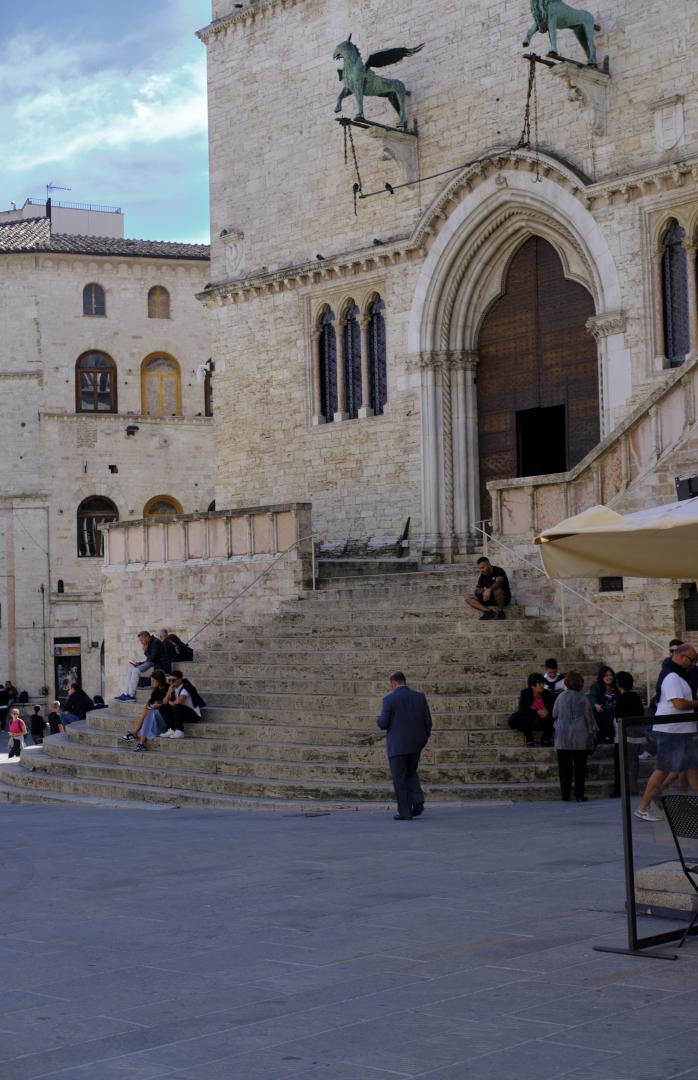
These days the room is once again an assembly hall, of sorts, where public meetings are held, lectures given, and city councillors meet. Weddings are held there, and last time I was there they were holding a prizegiving for a fun run. But what a magnificent place it is to hold any kind of ceremony.
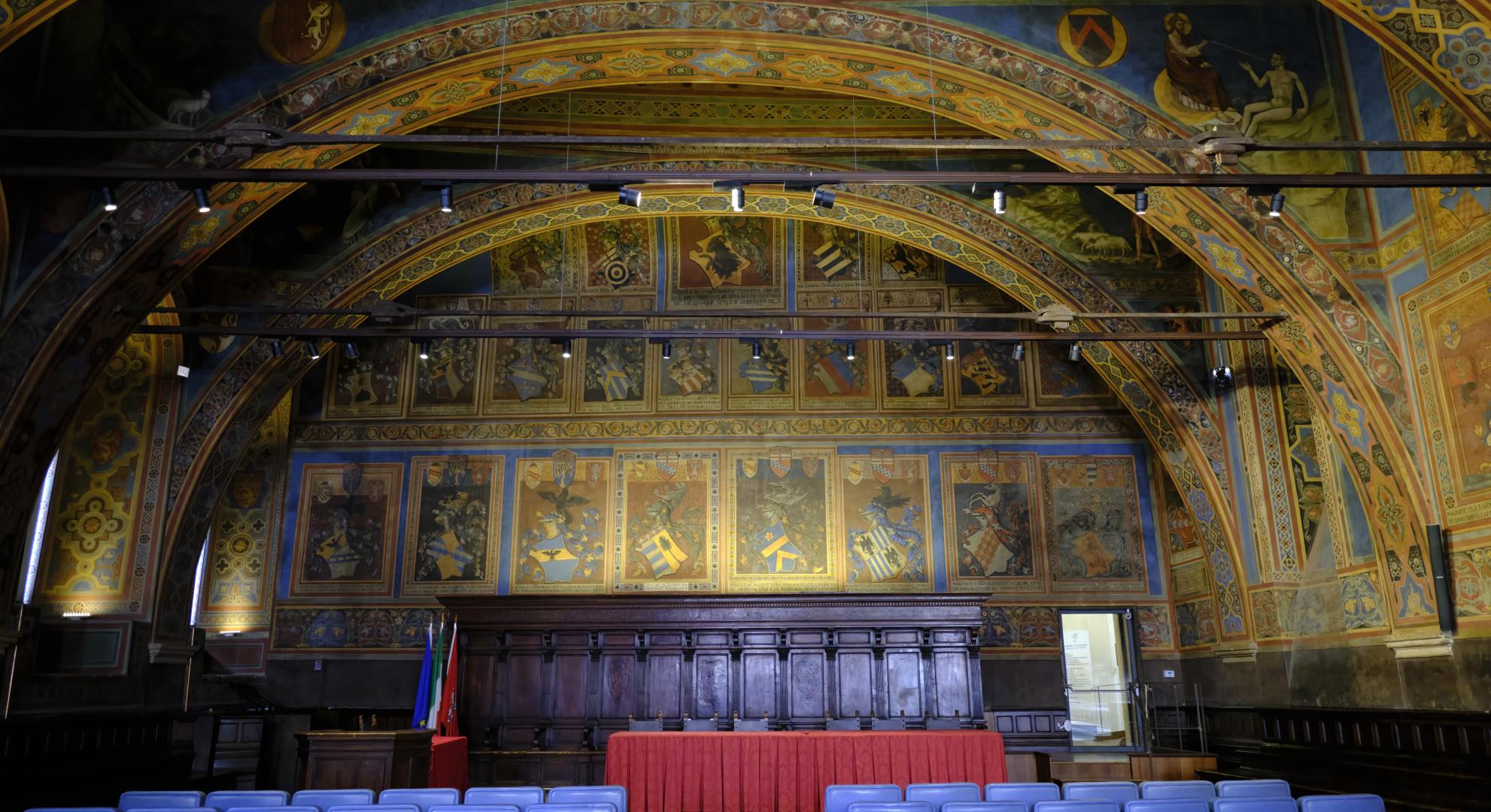
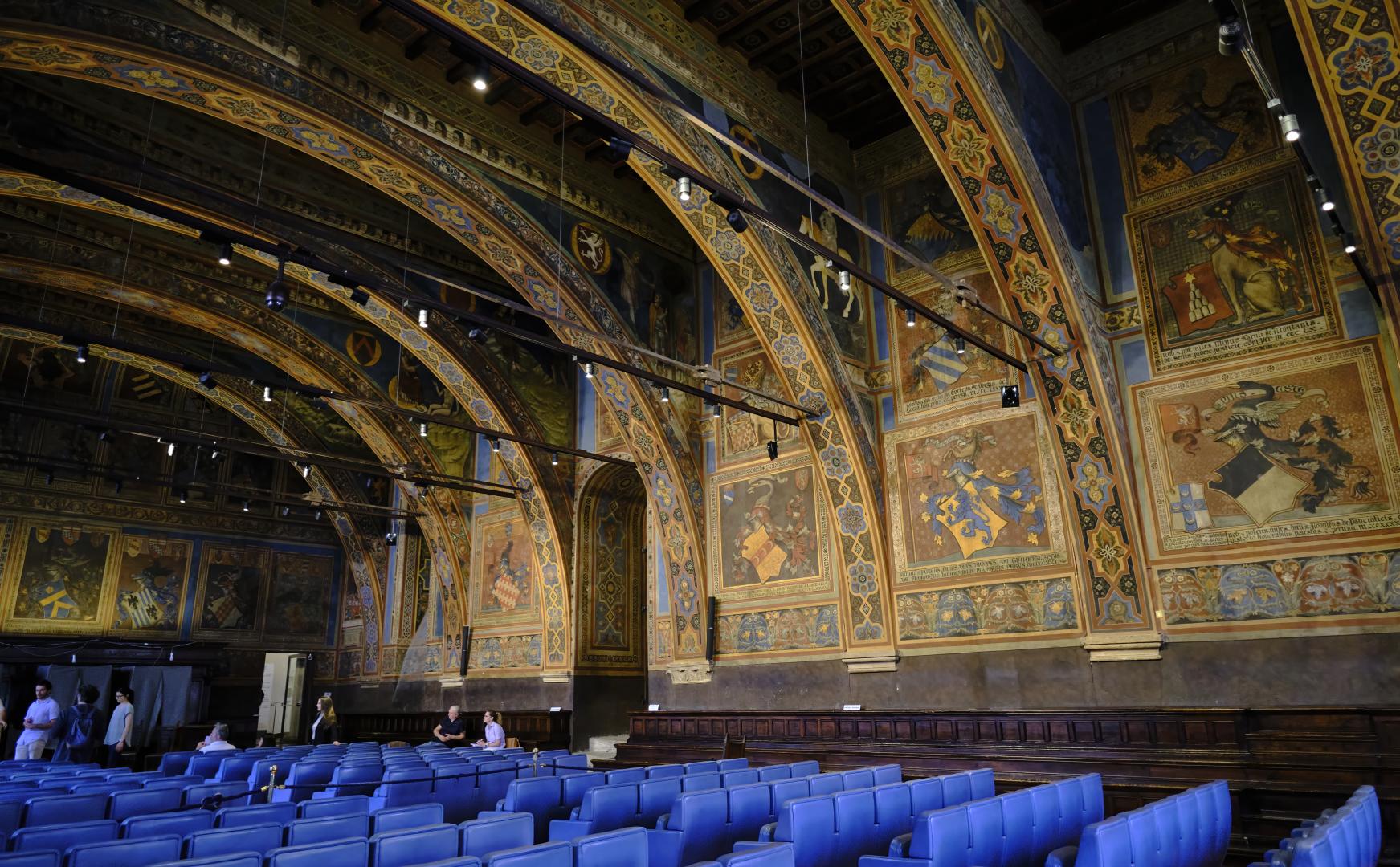
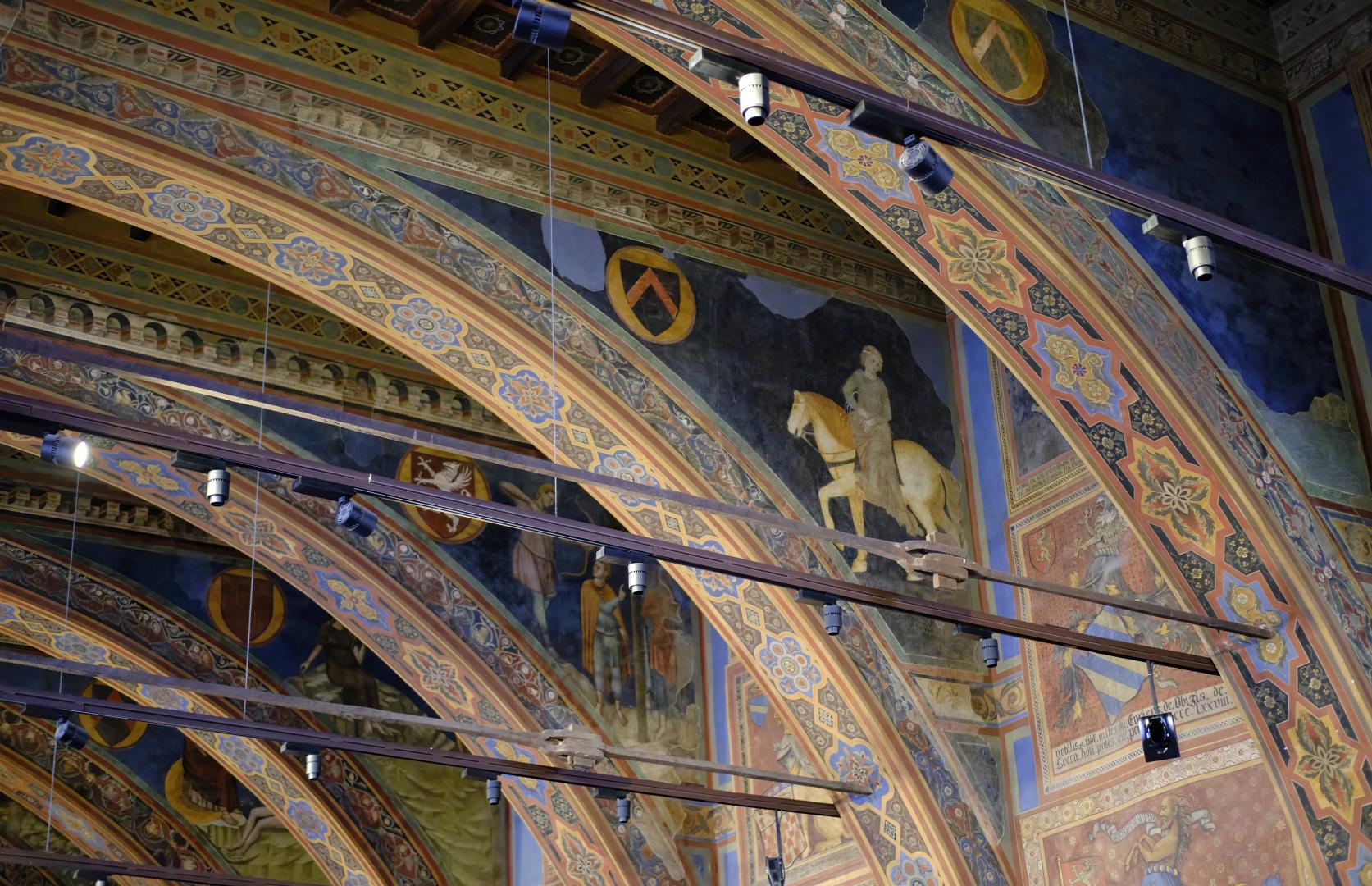
The frescoes date from the 13th Century, and some depict biblical stories, Aesop’s Fables, and other improving maxims. There are also commemorations of the medieval podestàs of Perugia in the form of their coats of arms. All were, however, heavily restored in 1860 by a local artist named Tassi – and show it, especially the podestà memorials. The style is 19th-Century and the writing is in the sort of Victorian mock-gothic script that in England one sees in calligraphy by Augustus Pugin and William Morris. Nonetheless the effect is still very striking, and what is more, this was not just a simple exercise in nostalgia or fashionable neo-gothicism, but a historically significant act. Look at the date. 1860 was the year that Perugians finally – after several bloody failures – threw off the Papal yoke and became part of united Italy. Of course they were going to emphasise and celebrate anything that reminded them of their historical autonomy.
A selection of these commemorations follows, with my attempts at translating the (often abbreviated) Latin.
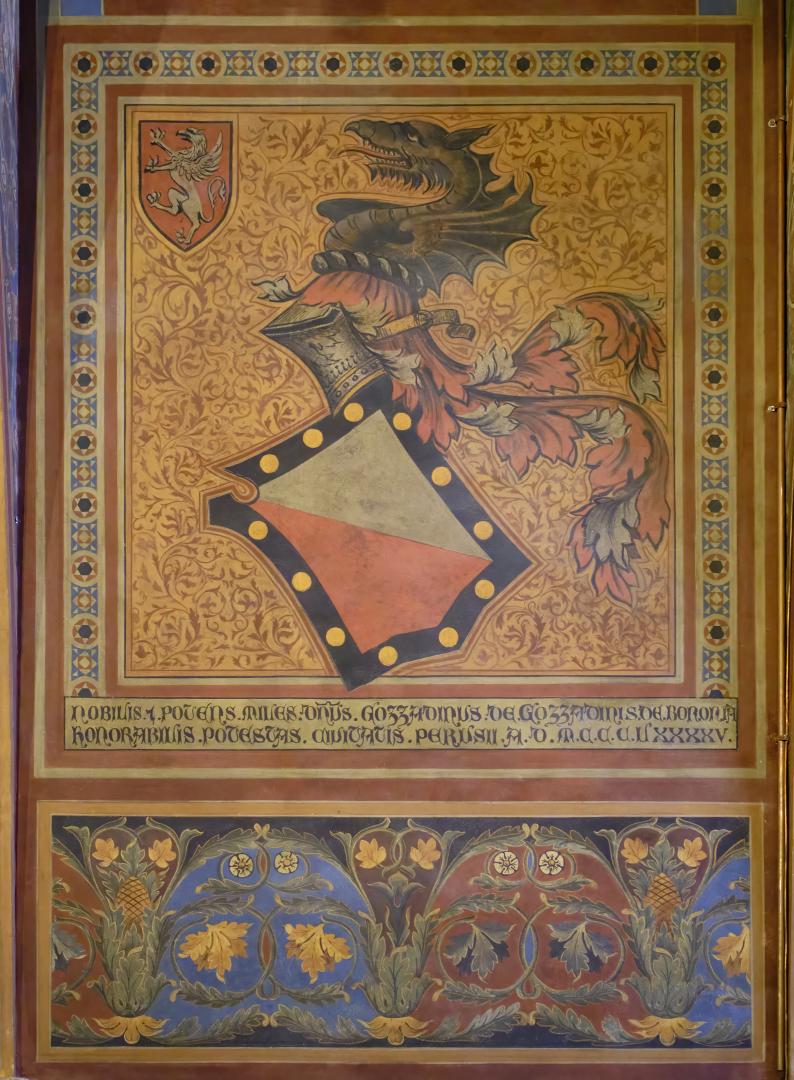
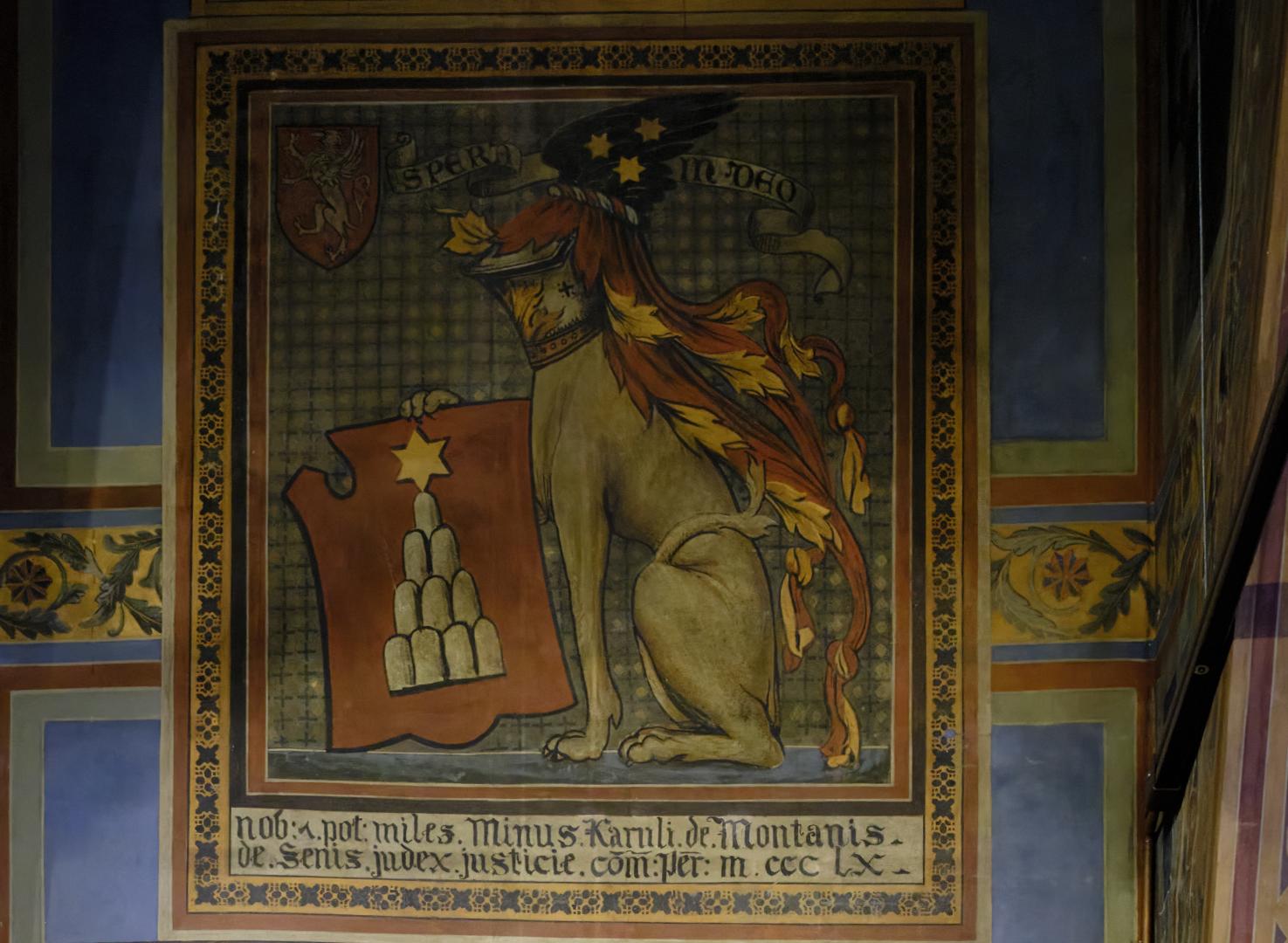
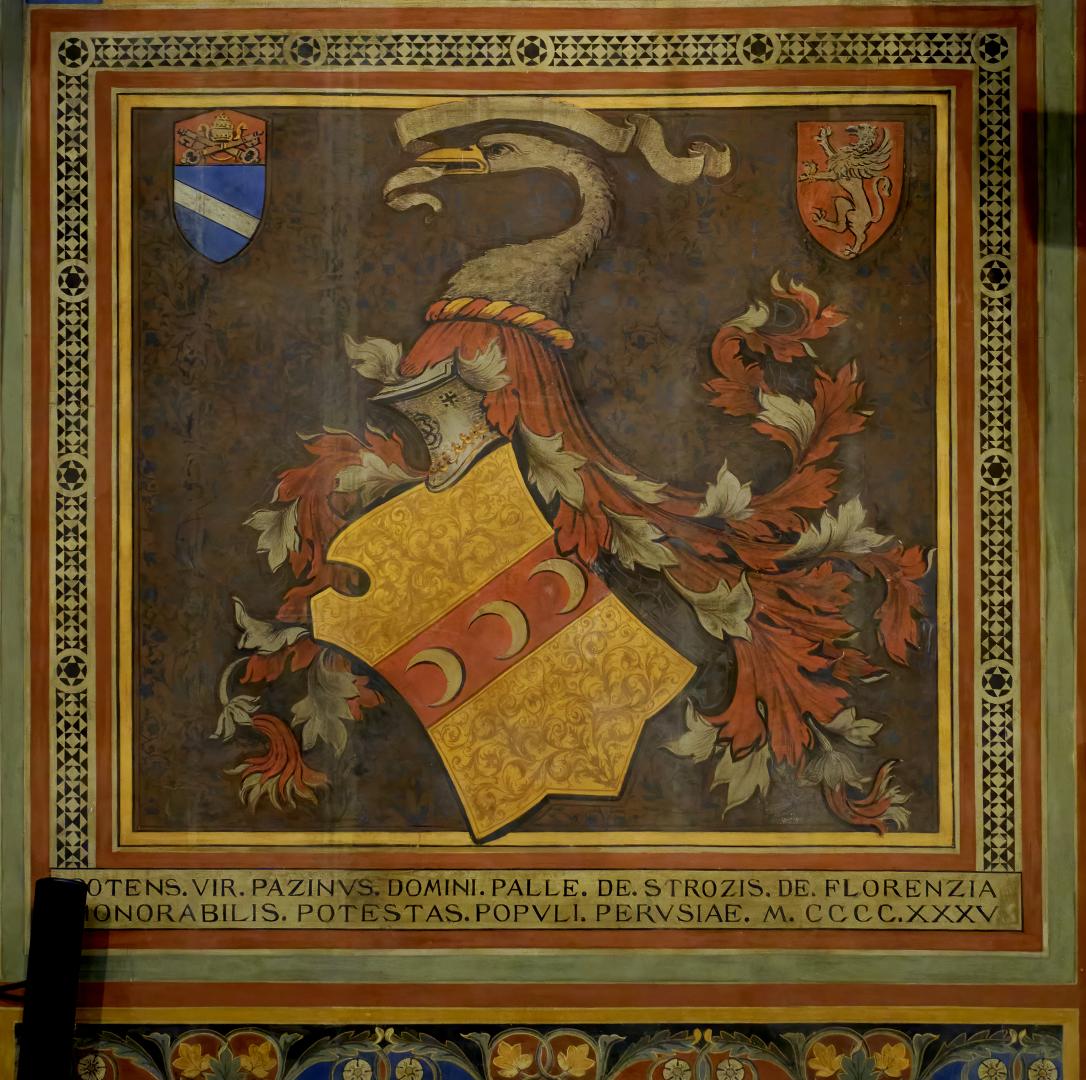
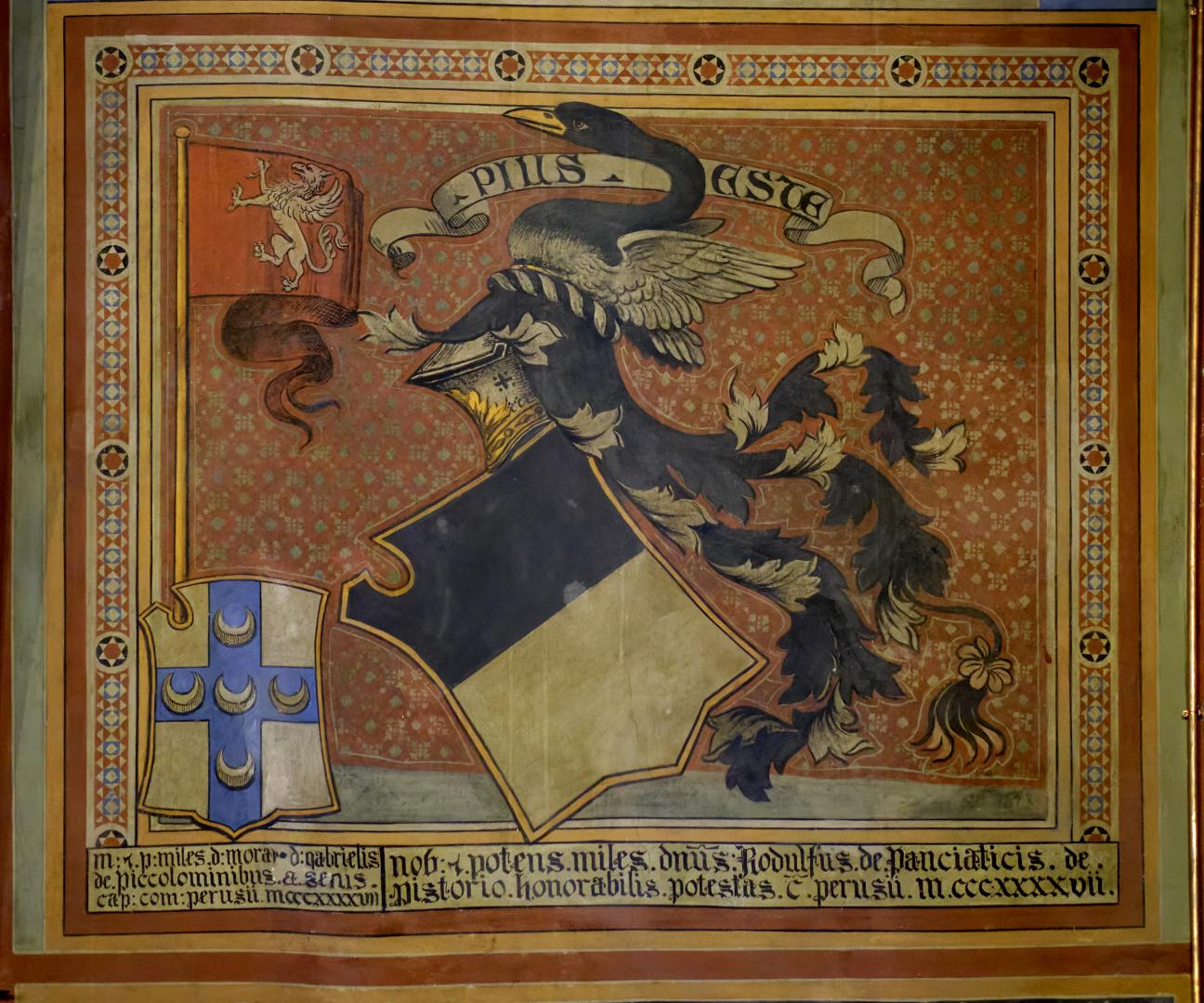
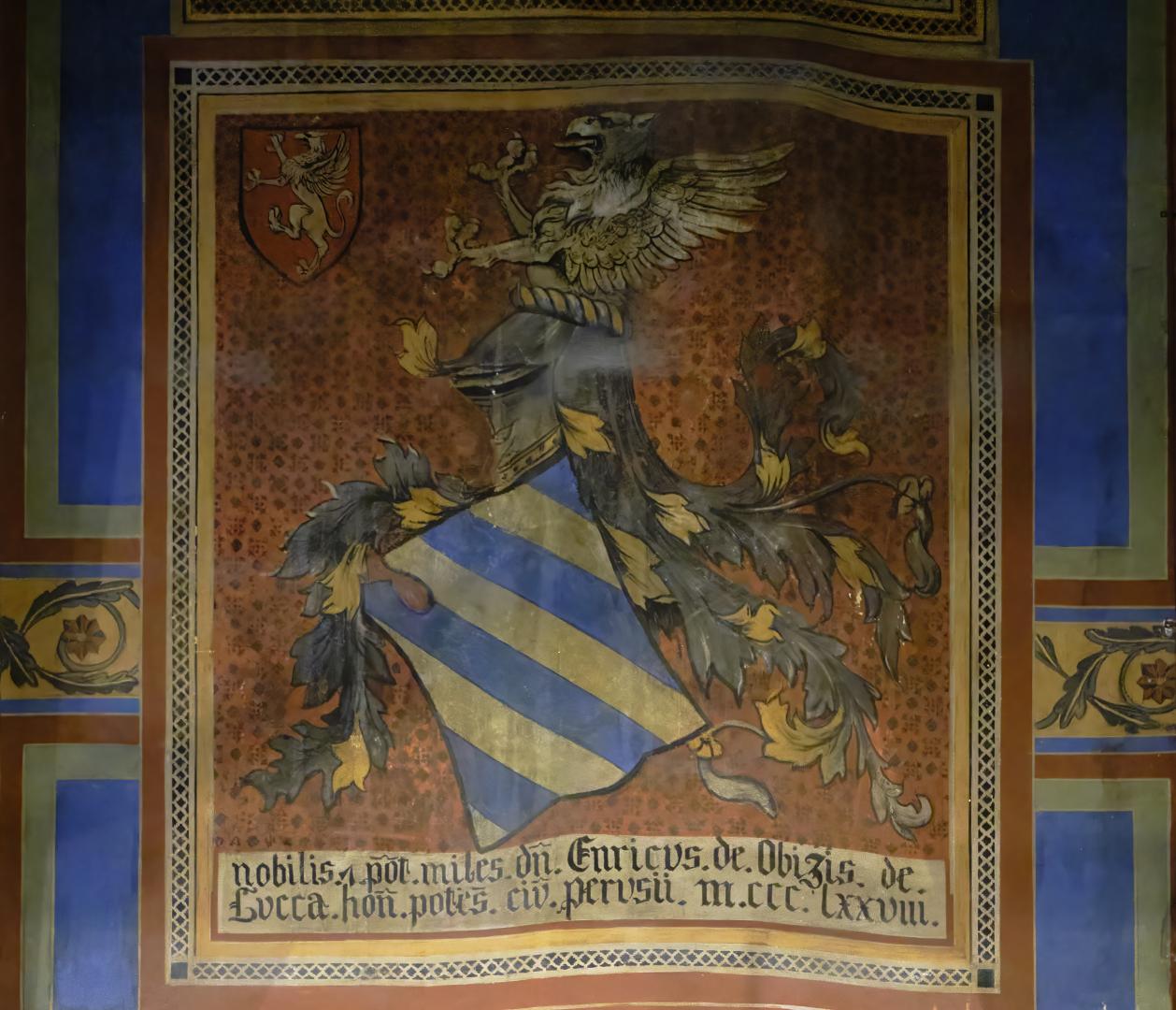
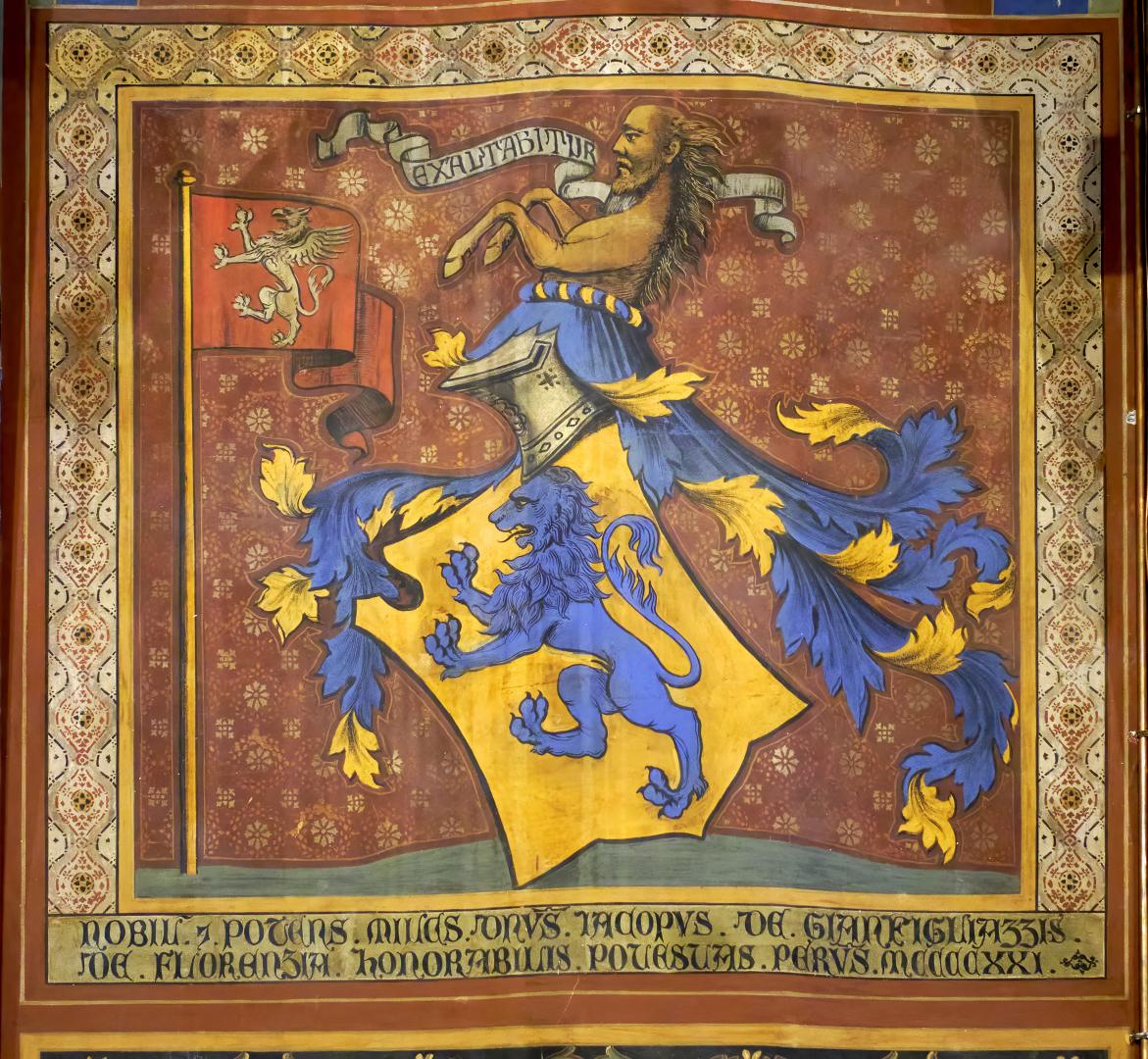
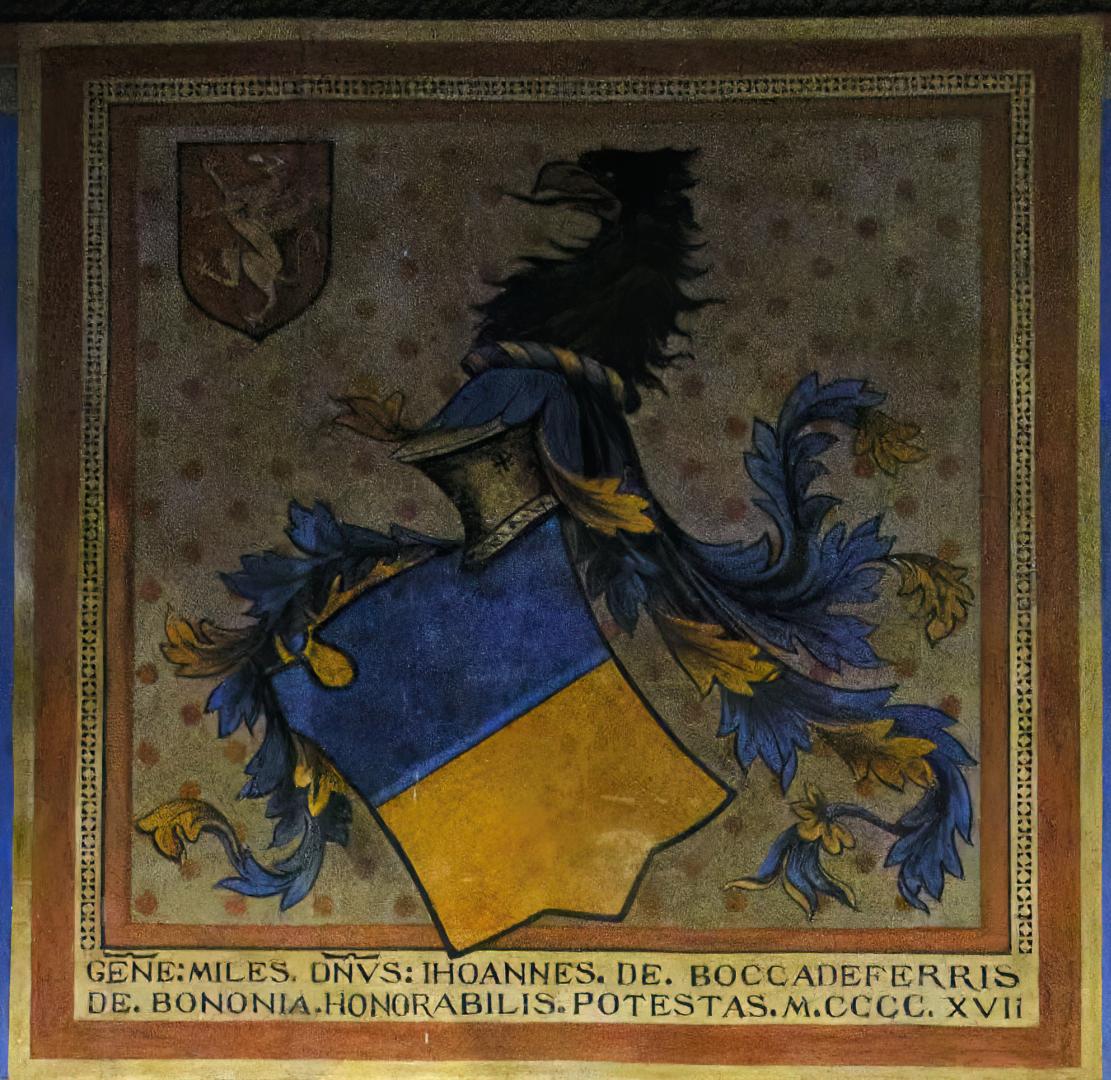
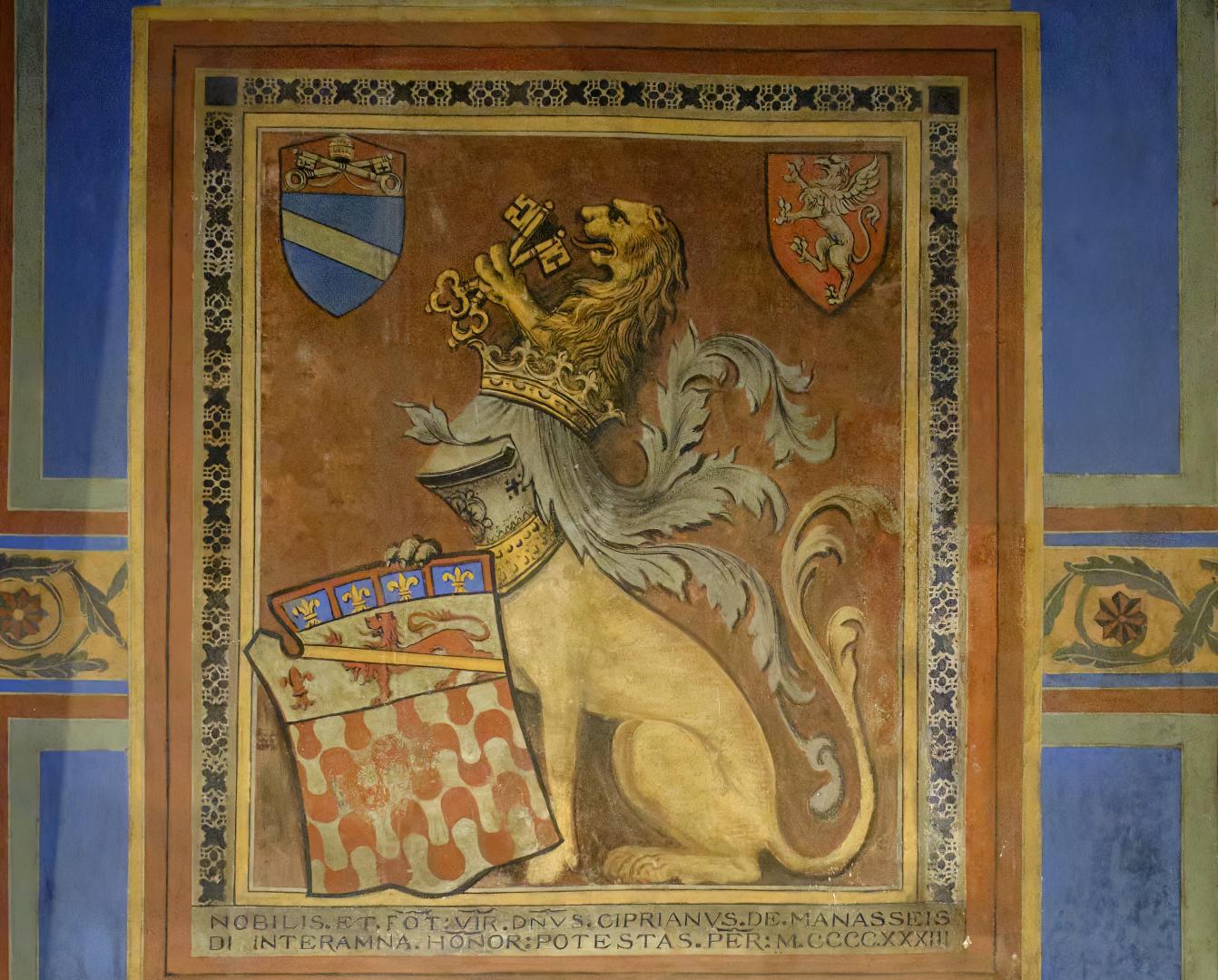
I am struck by how far away some of these podestàs come from: Bologna, Siena, Lucca and so on. But these are all other independently-minded cities, and presumably shared the Perugians’ commitment to self-determination. It is appropriate, therefore, that the Perugini should have honoured them at the time, appropriate too that their descendants should have renewed the honour in 1860 after the end of Papal domination, and appropriate still that their coats of arms should look down on the Perugini today as they get married, debate council taxes, and hand out medals.
